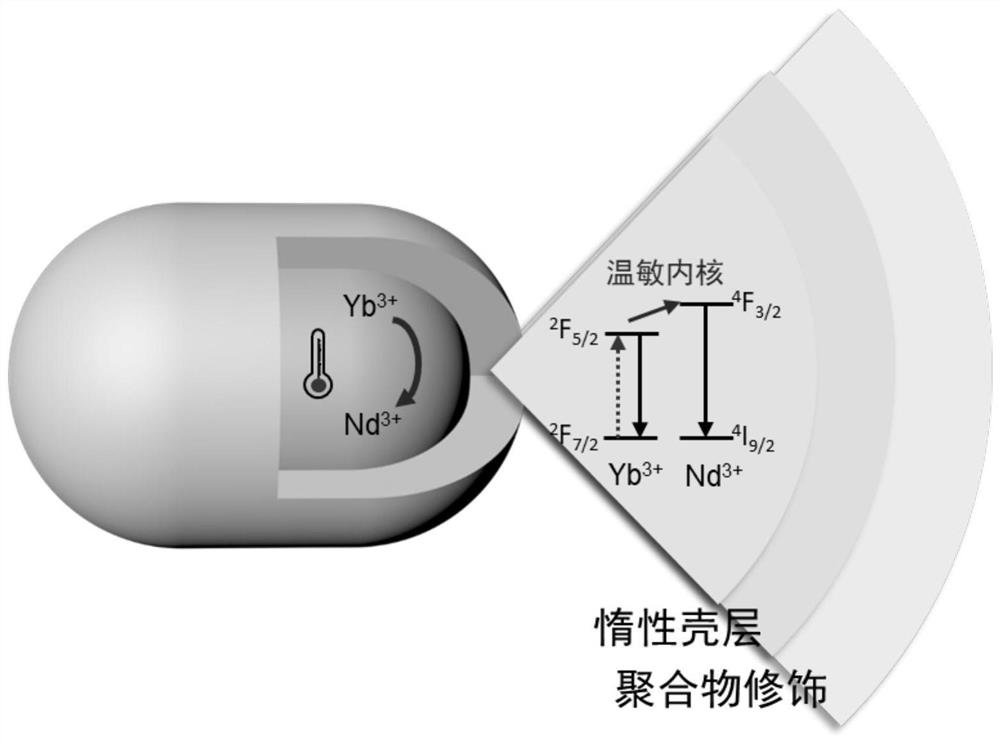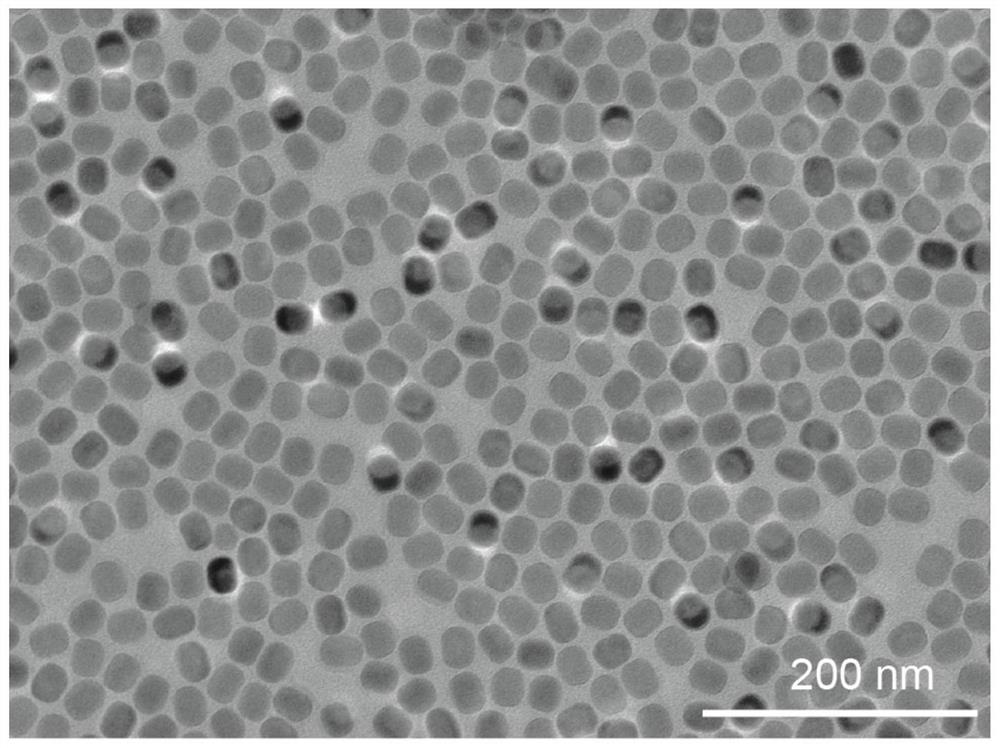Temperature measurement method based on rare earth luminescence lifetime temperature probe
A technology of temperature probe and rare earth luminescence, applied in radiation pyrometry, luminescent materials, optical radiation measurement, etc., can solve the problem of accurate readout of fluorescence signal intensity, high requirements for excitation light or detector, and gold cluster fluorescence lifetime Issues with greater impact
- Summary
- Abstract
- Description
- Claims
- Application Information
AI Technical Summary
Problems solved by technology
Method used
Image
Examples
Embodiment 1
[0067] Embodiment 1 life temperature probe NaYbF 4 :95%Nd@CaF 2 Synthesis of (1:6)
[0068] 1-1) Nano core NaYbF 4 : Synthesis of 95% Nd
[0069] Take 1mmol of lanthanide rare earth trifluoroacetate (containing 0.95mmolNd(TFA) 3 and 0.05 mmol Yb(TFA) 3) and 1 mmol trifluoroacetic acid sodium salt were added to a three-necked flask containing 10 mmol oleic acid, 10 mmol oleylamine and 20 mmol octadecene. Use an oil pump to evacuate the system to a near-vacuum state, raise the temperature to 110°C while vigorously stirring, and completely dissolve the solid powder in about 20 minutes. Then fully diffuse the nitrogen into the whole system, and then use the oil pump to evacuate the system to a near-vacuum state, repeat this operation three times, fully remove the air in the system, and protect the reaction system with nitrogen. Then the temperature was raised rapidly to 300°C, and the reaction solution went from turbid to clear. After 30 minutes, the heater was turned off, a...
Embodiment 2
[0072] Example 2 life temperature probe NaYbF 4 :90%Nd@CaF 2 Synthesis of (1:6)
[0073] The method of this embodiment is basically the same as that of Example 1, except that 1 mmol of lanthanide rare earth trifluoroacetate in step 1-1) contains 0.90 mmol of Nd(TFA) 3 and 0.10mmol Yb(TFA) 3 ;Finally get NaYbF 4 :90%Nd@CaF 2 (1:6), and dispersed in 10mL cyclohexane solution.
Embodiment 3
[0074] Example 3 life temperature probe NaYbF 4 :75%Nd@CaF 2 Synthesis of (1:6)
[0075] The method of this embodiment is basically the same as that of Example 1, except that 1 mmol of lanthanide rare earth trifluoroacetate in step 1-1) contains 0.75 mmol of Nd (TFA) 3 and 0.25 mmol Yb(TFA) 3 ;Finally get NaYbF 4 :75%Nd@CaF 2 (1:6), and dispersed in 10mL cyclohexane solution.
[0076] in addition, figure 2 Is the nano core NaYbF in this embodiment 4 : Transmission electron micrograph of 75% Nd, the material size is 5nm, the material has good dispersion and uniform particle size.
[0077] image 3 is the lifetime temperature probe NaYbF in this example 4 :75%Nd@CaF 2 (1:6) transmission electron micrograph, the size of the material is 11.3nm, the material has good dispersion and uniform particle size.
PUM
| Property | Measurement | Unit |
|---|---|---|
| Luminous life | aaaaa | aaaaa |
| Luminous life | aaaaa | aaaaa |
Abstract
Description
Claims
Application Information
 Login to View More
Login to View More - R&D
- Intellectual Property
- Life Sciences
- Materials
- Tech Scout
- Unparalleled Data Quality
- Higher Quality Content
- 60% Fewer Hallucinations
Browse by: Latest US Patents, China's latest patents, Technical Efficacy Thesaurus, Application Domain, Technology Topic, Popular Technical Reports.
© 2025 PatSnap. All rights reserved.Legal|Privacy policy|Modern Slavery Act Transparency Statement|Sitemap|About US| Contact US: help@patsnap.com



